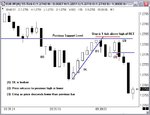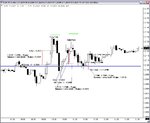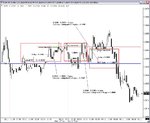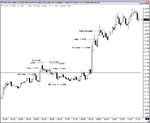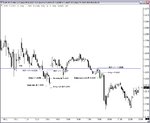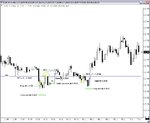FX_Cowboy
Well-known member
- Messages
- 250
- Likes
- 16
I'm beginning this journal in an attempt to improve my trading. I'll be documenting my efforts to develop an "edge" -- a single, consistently profitable setup -- and to establish a trading plan based on that setup.
This journal is actually the continuation of a journal I started almost a year and a half ago, in DBPhoenix's "Mapping the Territory" member board. I haven't posted much to that journal over the last six months, so this journal is also an opportunity for me to start afresh, and to complete a task (which I regard as just a single step in a larger journey) that I have left unfinished.
As before, the objective is a written trading plan based on a breakout (BO) and retracement (RET) strategy. I believe that developing this plan will help me to overcome one of my main problems as a trader -- taking impulsive trades -- while making my trading more consistently profitable by providing researched, probability-based justifications for my trading decisions and minimizing the impact of emotions on my trading behavior.
I trade by price (and watch volume as a sort of punctuation for what I'm reading from price), but use no other indicators. The market I trade is the Euro/USD spot market. I get my volume information from the GLOBEX Euro futures market, which I monitor concurrently.
DBPhoenix has been kind enough to provide commentary from time to time in my previous journal, and I certainly hope he will continue to do so in this journal. Comments from others -- especially trader interested in and/or experienced with breakout and retracement setups, and those knowledgeable about trading forex -- are also most welcome.
This journal is actually the continuation of a journal I started almost a year and a half ago, in DBPhoenix's "Mapping the Territory" member board. I haven't posted much to that journal over the last six months, so this journal is also an opportunity for me to start afresh, and to complete a task (which I regard as just a single step in a larger journey) that I have left unfinished.
As before, the objective is a written trading plan based on a breakout (BO) and retracement (RET) strategy. I believe that developing this plan will help me to overcome one of my main problems as a trader -- taking impulsive trades -- while making my trading more consistently profitable by providing researched, probability-based justifications for my trading decisions and minimizing the impact of emotions on my trading behavior.
I trade by price (and watch volume as a sort of punctuation for what I'm reading from price), but use no other indicators. The market I trade is the Euro/USD spot market. I get my volume information from the GLOBEX Euro futures market, which I monitor concurrently.
DBPhoenix has been kind enough to provide commentary from time to time in my previous journal, and I certainly hope he will continue to do so in this journal. Comments from others -- especially trader interested in and/or experienced with breakout and retracement setups, and those knowledgeable about trading forex -- are also most welcome.

